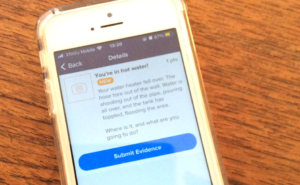In this time of Zoom, not wearing pants has become an occasional embarrassment, and a common joke. However, participants in our most recent event realized first-hand that it can be a harsh reality of disaster,
“… we may end up leaving this home, pretty much with just clothing, no shoes, cause we went out the back door, we didn’t take shoes.”
— Garett
This was our first experiment in delivering our immersive learning experiences virtually, necessitated by the COVID-19 pandemic.
We were thrilled at how well virtual delivery worked! Read the full report to understand what we did, what worked and what didn’t. Continue reading for a brief summary of what we learned.
What did we do?
The learning experience was a 2.5 hour simulation of a catastrophic earthquake. As in our physical events, the action took place in participants’ homes, and around their neighborhood — in this case, a virtual neighborhood.
Seven individuals from three households in three different states participated. Two of our trainers supported delivery.

Verbal communication (outside of households) was over Zoom — including “visits” to neighbors.

Participants received live challenges and situational updates via GooseChase, a mobile app designed for scavenger hunts.

Trainers used the GooseChase dashboard to issue challenges and view responses.

What did we discover?
While participants came away with a better understanding of the realities of disaster, we came away with three big takeaways.
1. It works!
OK, this one isn’t new. We already have confidence in in-person delivery. We were happy to see the virtual pilot be equally successful.
Participants find the virtual event enjoyable and satisfying, just as in the in-person events,
“I had a blast.”
— Amy
“That was an enjoyable experience.”
— Jeremy
The immersive format increases engagement,
“For me personally, actually sort of felt very real when I was hiding underneath the counter on the floor. So there’s like a little bit of — even though I know it’s fake — a little anxiety creeping up there.”
— Zach
Participants get insights and inspiration to improve their preparedness,
“It definitely helped me organize my thoughts on how to prepare in some ways, because, before this, I’ve long gone, okay, we got to prepare by doing some stuff, but I’m not really sure what, you know?”
— Garett
2. Virtual delivery provided advantages over in-person delivery
To our surprise, there were some major advantages to virtual delivery.
First, it eliminated the to’ing and fro’ing that is inherent in physical events. In a physical event, there is inevitably waiting around while people walk from place to place, go to the bathroom, finish the side conversation, etc. In Zoom, people pop right back in, so a 5-minute break actually takes 5 minutes!
This makes it much easier to stay on schedule. More importantly, there are fewer and shorter breaks in the story of the simulation. That makes it easier for participants to keep up the energy, and stay in the story.
Second, our in-person events have relied on paper to communicate challenges, as a significant number of participants were not comfortable with mobile technology. With virtual delivery, however, participants were already on their computers and phones for verbal communication, so introducing a mobile app was a minor matter of app familiarization.
Third, since participants submitted their solutions via GooseChase we had very detailed insight into what participants were doing as the event progressed. This allowed us to be much more responsive in adapting challenges and adjusting the overall storyline in real-time.
Finally, eliminating physical concerns — traffic safety, inadvertent bystander involvement, catering, etc. — meant that event management was immensely simpler.
3. It’s time to dig deeper!
The experiment hammered home that we are ready to dig deeper into the design of the learning experience itself.
In particular, it highlighted two areas for improvement:
- Refine learning experience design to target increasingly sophisticated learning objectives, starting with basic preparedness and building up to the improvised leadership skills and mindsets that are our ultimate goal.
- Find ways to engage younger children. Ultimately, our community events need to be a whole family/whole community experience. At present, smaller children can lose interest, forcing a parent to drop out to focus on childcare.
Summary
The pilot demonstrated that virtual delivery can maintain participants’ sense of immersion, and give them insight into the realities of disaster. The increase in technical complexity and much greater demands on interactive experience management, were more than offset by the vast simplification of overall event management.
Our conclusion is that the advantages of virtual over physical delivery fully warrant pursuing more virtual events, and using them as a testbed for developing our learning experiences.
As a bonus, organizers don’t have to wear pants!
Thanks
With thanks to our sponsor,
![]()
and our project partner,

0 Comments